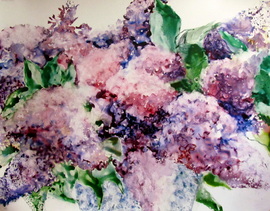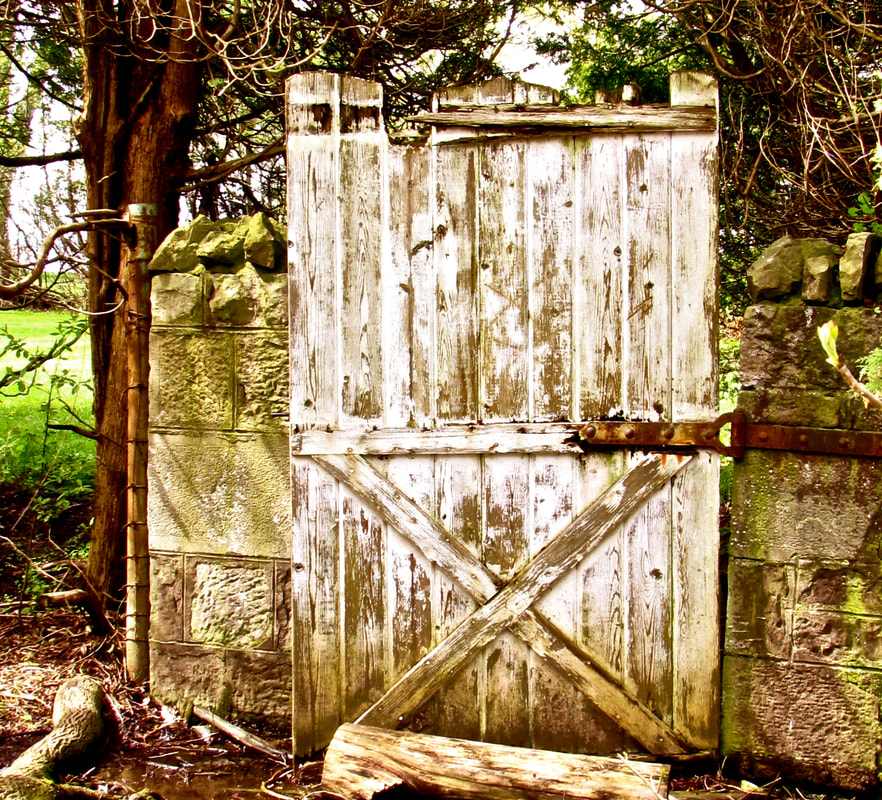 "Lilac" watercolour on yupo paper, 20 x 32
"Lilac" watercolour on yupo paper, 20 x 32 As a break from painting yesterday, I carefully washed the California and the beautiful old Limoges which were also white and gold, though with scalloped edges and tiny fleurs de lys, which my dear Aunt Hazel had given me. The porcelain Limoges is far more delicate than the English bone china, something my aunt realized when she as a newly-wed had received it as a gift from her rather challenging mother-in-law, who had shipped it from south-west U.S. in a crate without any padding. Aunt Hazel's gift to me was comprised of the few miraculous survivors of that hellish trip. I treasure them and rather admire their will to live.
Of course, Mother was absolutely right. Everything except beige food looks great on those plates. In general, white enhances the juiciness of other colours and I used it shamelessly as a background in my watercolours. In fact, until I took up oils, I didn't even own any white paint because the trick in watercolour is always to reserve the white of the paper, an intention more honoured in the breach than in the observance.
Oil is the diametric opposite and pure white as a super highlight is the very last addition to a painting. Generally, however, the best way to judge the colour you are mixing is to place it on a mid-tone background. For years I have toned new canvases in Indian red or raw umber but it never occurred to me to use a mid-tone palette as well. Elizabeth Robbins had an elegantly simple solution: an old watercolour frame, fitted with cardboard backing under the glass. Heading for my go-to second-hand store, I bought one immediately. If the paint dries on me, a few swipes with a razer scraper clears the $1 palette admirably. Thanks, Elizabeth!
I often wonder how I would manage without the presence of the wise women in my life.

 RSS Feed
RSS Feed
